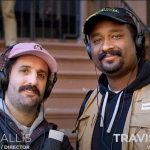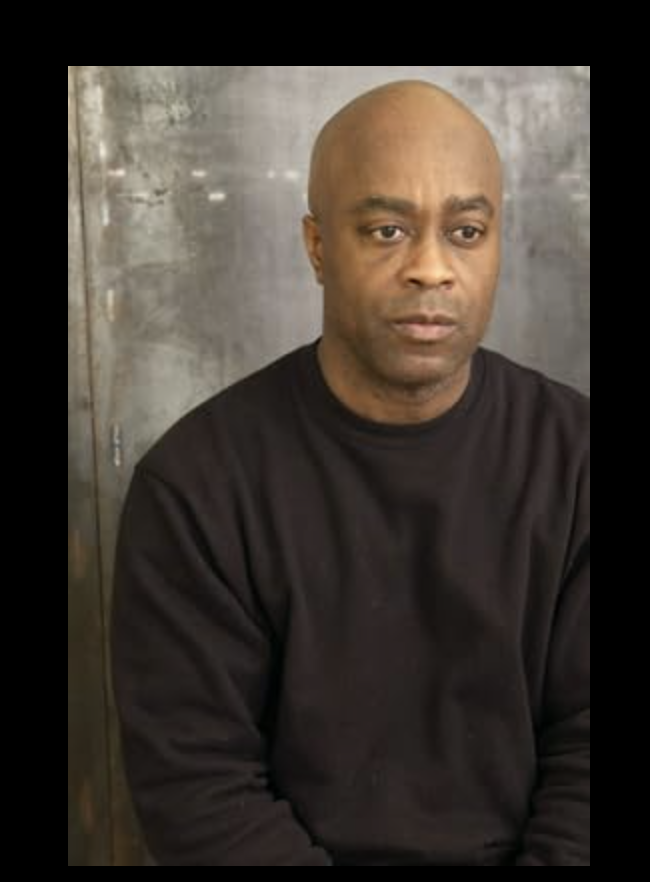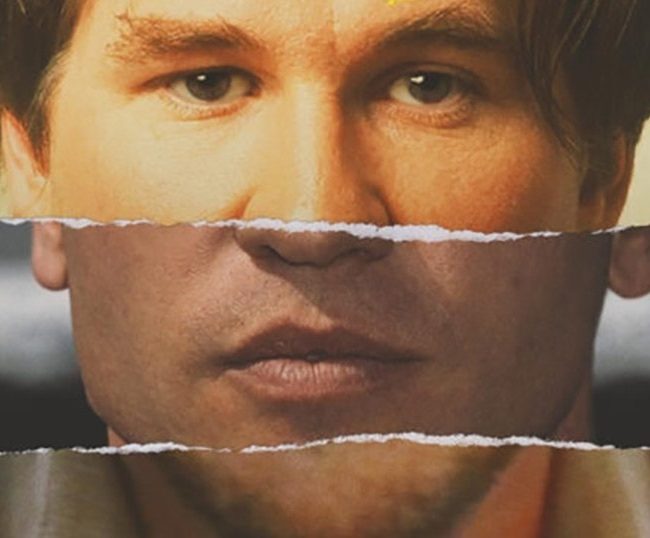NETFLIX HIDDEN GEMS: Issue #1
Good morning, class. Are you ready to participate in Hammer to Nail’s new monthly film history seminar? Credit goes to Mike S. Ryan for coming up with the spark for this new list idea, in which our core stable of HTN contributors is charged with the task of picking one film that is available on Netflix but which he or she deems to be overlooked, underappreciated, under-the-radar, forgotten, etc. After having just compiled our very first installment, I would already say that the purpose has been served, as I have seen embarrassingly few of these titles myself and plan to start playing catch up right now. The best part is that with such a variety of contributors, this list really does run the gamut and show a broad spectrum of what movies—and, in particular, Netflix—has to offer. Now get to work, class, as September will be here before you know it and you don’t want your queue to get even longer than it already is…

***ISSUE #1: AUGUST ‘09***
The Hairdresser’s Husband (Le mari de la coiffeuse) (1990) — This BAFTA nominated film starring the magnificent Jean Rochefort and the beautiful Anna Galiena packs such an unexpected emotional wallop, it will never leave your mind fully after seeing it. Directed by Patrice Leconte, it is by turns erotic and highly entertaining, and poignantly illustrates the full arc of a passionate love affair, tragic ending and all. It is one of my favorite movies ever. (Pamela Cohn)
Happy Campers (2001) — This pulpy summer camp flick puts Heathers, Jacques Demy’s Donkey Skin and A Midsummer Night’s Dream into a blender, creating a farcical fantasy that remains one of best depictions of teen lust I’ve yet to see. The stinky, hormonal melee is conducted by Brad Renfro (RIP, gorgeous) a thinking girls sex symbol whose snarky confidence throws a Tracy Flick-type cheerleader—Dominique Swain, in one of her only acceptable roles post-Lolita—for a loop. Their ensuing love scenes definitely make you want to set out for the woods. Don’t miss Peter Stormare’s turn as a power-mad camp director with the ability to smell children coupling. (Lena Dunham)
Little Fugitive (1953) — One of the most influential of all American Independent films, this modest masterpiece by Morris Engel, Ruth Orkin and Ray Ashley captures the wonderment and anxiety of a seven-year-old Brooklyn boy (Richie Andrusco) who hides out on Coney Island convinced he is guilty of killing his older brother. Featuring groundbreaking naturalistic photography shot on location, this example of New York Neorealism was one also one of the principal influences on the French New Wave, particularly Francois Truffaut’s The 400 Blows. (Cullen Gallagher)
The Last Bolshevik (1992) — One of the great Chris Marker’s greatest accomplishments, The Last Bolshevik is an unparalleled look into the revolutionary ideals and disillusionments of the 20th century and the cinema and images that sprung forth from the great social experiment of the Soviet Union. Ostensibly a portrait of the filmmaker Aleksander Medvedkin, Marker deploys his unique blend of wit and ironic juxtaposition to expose the tensions and heartbreaks born of the betrayals and the violence of the Stalin regime, at the intersection of political ideals, art and terror. Marker’s gift, his ability to find history and meaning in tucked away in the corners of otherwise forgotten images, is the stuff I live for as a film lover. (Tom Hall)
August The First (2007) — Shot with a gentle naturalism in long, loose hand-held takes, Lanre Olabisi’s Gotham Award-nominated August the First recounts the college graduation party of Tunde (Ian Alsup), a sensitive if irresponsible young man who unbeknownst to his typically dysfunctional New Jersey family has invited his estranged Nigerian father (a terrific Dennis Ruben Green) to the party after an abrupt, ten-year absence. His ailing grandmother (Gloria Suave), pregnant sister (Kerisse Hutchinson), alcoholic mother (Joy Meriweather) or dutiful brother (Sean Phillips) all hold onto different degrees of hostility toward the returned patriarch. The film never reveals the nature of his earlier disappearance, but we slowly learn of the tentative relationship he has maintained with Tunde, and his desire to relocate his new Nigerian family into his previous household. Olabisi and co-writer Shawn Alexander parcel out details with sparseness, and to great effect. As the Nigerian’s Machiavellian intentions and supremely manipulative nature rise to the surface on this long day’s journey into night, August The First delicately burrows underneath the spectators skin, becoming sneakily powerful by its climatic moments in a way reminiscent of Charles Burnett’s To Sleep With Anger. (Brandon Harris)
Touki Bouki (1973) — Twenty years prior to completing his masterpiece Hyenas, Senegal’s legendary Djibril Diop Mambety crafted this tale of hijinks, passion and desperation that feels like an acid-infused African version of Bonnie and Clyde. Two lovers dream of escaping dusty Dakar for a life of wealth and freedom in Paris. Hustling to achieve their lustful aspirations at any cost, the couple becomes corrupted to the core by a newfound hunger for the material promise of western life. With acrid humor and full on experimental passages that slide between tripped out fantasy and reality, Touki Bouki is a searing and unforgettable post-colonial tale and an all-time great in the history of Senegalese cinema. (Holly Herrick)
The Chase (1966) — I could not figure out how I put Arthur Penn’s The Chase at the top of my Netflix queue. It was a real treat, one that offered more than just the usual pleasures; The Chase is a film that captures cinema as its dominant forms start to change—it is a movie in transition, something we can only recognize now through the privilege of time passing. Some of its strength comes from the conflict of forms within itself. There’s a tour of acting styles on display: Marlon Brando is deep into a method approach, soulful as the small town sheriff; Jane Fonda is the adulterous spouse to Robert Redford’s conflict, both running on their movie star beauty, but seeking something else; Robert Duvall rests more on charactery shtick than he ever does again. It’s a huge cast and a great study of a town in crisis courtesy of both Horton Foote and Lillian Hellman, but the schematic trends of its time, along with its theatrical origins, give it a rhythm that is almost operatic. It’s the kind of film that television once consistently revived to redefine cinema classics, a populist fable of small town life. (Ted Hope)
The Gambler (1974) — James Caan is at his thoughtful-simian best playing Axel Freed, a City College lit prof and hopeless risk-and-adrenaline junkie, in this 1974 gem. Karel Reisz directs from a James Toback script, bringing Toback’s existentialist-egomaniac vision to the screen with vigor and verve. Also with fine supporting work by Paul Sorvino’s eyebrows, Lauren Hutton’s legs, and Burt Young’s jowls. (Footnote: David Simon has cited The Gambler’s final scene as the direct inspiration for our last glimpse of Marlo Stanfield at the end of The Wire’s Season Five.) (Nelson Kim)
Giants & Toys (1958) — Despite his groundbreaking work with genre, sexuality, characterization and camera, the name of Japanese auteur Yasuko Masumura often gets left off of a list of the nation’s great directors because of the hit-or-miss nature of his body of work. Giants & Toys might be his most playful and deceptively complex piece, a breathtaking series of metaphors and symbolism all embedded in an uproarious and bizarre comedy about rival candy companies that builds into a great theatrical satire worthy of Aristophanes. Of all the films that play on every level of intelligence, this one really delivers the goods. (Michael Lerman)
Fort Apache, The Bronx (1981) — Daniel Petrie’s notoriously overlooked visceral ‘70s NYC street war story, with corrupt cops & dope dealers locked in battle. Examines concepts of loyalty within different social dynamics & circles from community organizing, badge/rank fraternity, and interracial romance. Sporting a solid Paul Newman, an understated Ed Asner, a young Danny Aiello, and an almost anonymous Miguel “scatter my ashes on the Lower East Side” Pinero, it’s a real shame it’s so unnoticed to this day. Straight up raw morality play. (Evan Louison)
Local Hero (1983) — Every now and then you discover a filmmaker who seems to have gotten short thrift in the annals of recent history. Such was my immediate conclusion last summer when a friend sat me down and showed me Bill Forsyth’s Local Hero, a whimsical tale whose tried and true, honest to goodness narrative is pinioned from both ends by surehanded strangeness and unexpected beauty. This is the story of an oil man from Houston (Peter Reigert) who’s sent by his boss (a stargazing Burt Lancaster) to purchase an entire Scottish town, upon which he plans to build a refinery. Of course, said oil man falls in love with the odd Gallic charm of the place and finds himself questioning his industrialist ways. A mermaid may or may not have something to do with his decision. What people remember the most from this film is the aching guitar score by Mark Knopfler, and one can hardly blame them; but a closer look reveals the work of a filmmaker excited by the possibilities of his medium, eager to surprise audiences even as he plays within the classic confines of a fable. Next up on my Bill Forsyth viewing list: That Sinking Feeling, about a heist at a sink factory, and Housekeeping, an adaptation of Marilyn Robinson’s heartbreaking novel. Neither, sadly, are available on DVD. (David Lowery)
Born To Win (1971) — Directed by the unsung hero of the Czech New Wave, Ivan Passer, and edited by maverick Ralph Rosenblum—an appealingly odd mix of comedy and drama, buoyant silliness and ’70s nihilism that finds George Segal at his career-best as Jay Jay, a heroin addict/hairdresser about to hit bottom. Can the love of Karen Black save him from himself? Will Hector Elizondo give him a deadly “hotshot”? Wait, was that Robert De Niro? And why is Segal trouncing about Manhattan in frilly pink women’s underwear? A spellbinding, unusual, inexhaustible film. (Tom Russell)
Twinky (1969)— The first film by Richard Donner, set in groovy 1968 rack focus land, Charles Bronson trying to do light comedy as a porno writer who seduces a rich 16-year-old schoolgirl (Susan George) in London and before the law clamps down marries her and takes her back to NYC where she becomes a flower child too free for even him to keep down….WAK! (Mike S. Ryan)
Lifeguard (1976) — Another Daniel Petrie movie makes the list? So be it. Lifeguard is one of those little gems that lackadaisically coasts along to a particularly 1970s groove. 33-year-old Rick Carlson (Sam Elliot) can’t seem to play the game that his parents and ex-girlfriend (Anne Archer, man, is she pretty) so desperately want him to. While they pressure him to grow up and get a real job, Rick doesn’t see what’s so shameful in being a lifeguard at the beach. The dinner table scene in which Rick’s parents grill him as if he’s a 15-year-old—mind you, Sam Elliot in his mid-30s still comes off like he’s closer to fifty—is worth the price of admission alone. But it’s the budding relationship with a starry-eyed 15-year-old lifeguard groupie (Kathleen Quinlan) that makes this film a great example of how even PG movies got rawer in the ’70s. (Michael Tully)











